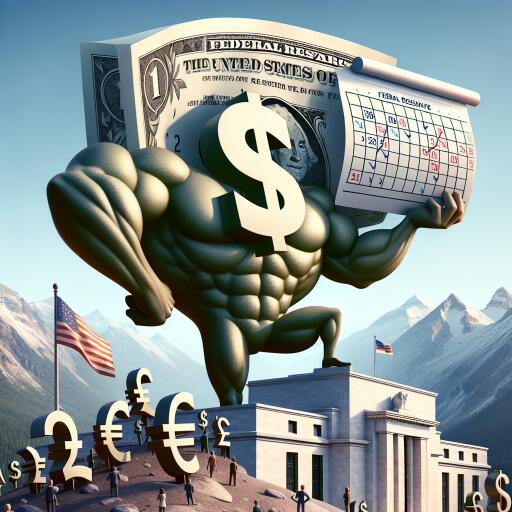U.S. Dollar Climbs to 11-Week High Amid Receding Fed Rate Cut Expectations
The U.S. dollar has surged to its highest level in nearly three months against a basket of major currencies, driven by diminishing expectations for imminent Federal Reserve rate cuts. This shift in trader sentiment comes in the wake of an unexpectedly robust U.S. jobs report and remarks from Fed Chair Jerome Powell advocating a cautious approach before any rate adjustments.
The dollar’s ascent was punctuated by a significant rise in U.S. Treasury yields, with the move being further fueled after Powell expressed, in a “60 Minutes” interview, the Fed’s intention to be patient in modifying its benchmark interest rate. This patience is tied to ensuring inflation consistently trends towards the Fed’s 2% target.
Amid these developments, the dollar index reached a peak of 104.3, marking its highest point since mid-November. Concurrently, the yield on two-year Treasuries escalated, further propelling the dollar’s upward trajectory.
The euro felt the pressure, dipping to its lowest since early December, while the yen also declined to levels not seen since the beginning of December. Analysts point to persistent challenges within the eurozone economy, particularly stagnation in Germany, as factors compounding the euro’s difficulties against a strengthening dollar.
Revised rate cut expectations now suggest a more conservative outlook, with market projections adjusting to anticipate roughly 120 basis points worth of easing from the Fed this year, a decrease from prior forecasts. This recalibration includes a significantly reduced probability of a rate cut occurring in March.
As the dollar rallies, sterling has retreated to its lowest since mid-December. Nonetheless, the pound’s response to lower-than-expected unemployment rates in Britain has been muted.
In Asia, despite efforts by China’s central bank to stabilize the yuan, the Chinese currency has faced challenges maintaining strength against the dollar’s rise, closing at its weakest level since November.
Looking forward, the market’s focus shifts to the upcoming ISM non-manufacturing survey, expected to offer fresh insights into the health of the U.S. economy in January.
